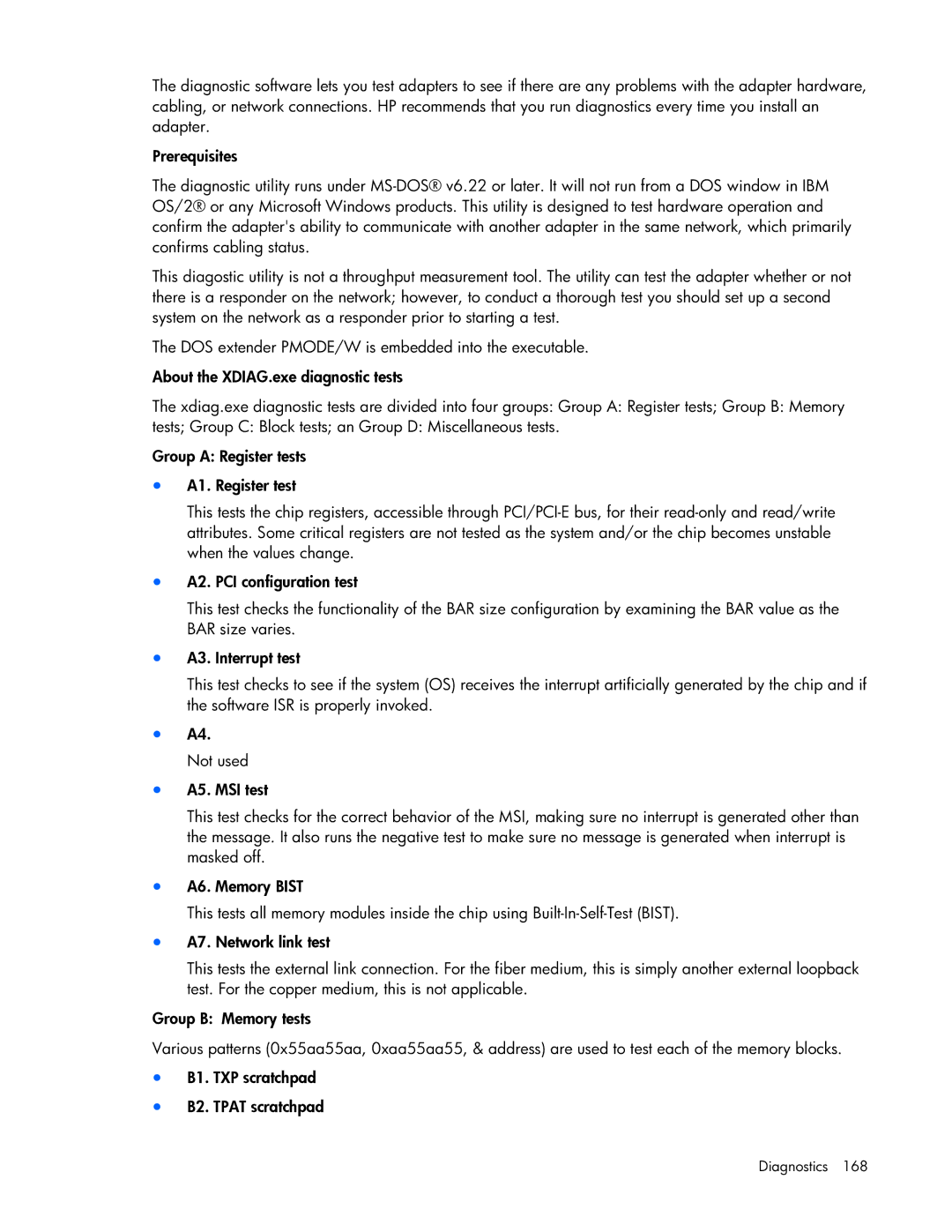The diagnostic software lets you test adapters to see if there are any problems with the adapter hardware, cabling, or network connections. HP recommends that you run diagnostics every time you install an adapter.
Prerequisites
The diagnostic utility runs under
This diagostic utility is not a throughput measurement tool. The utility can test the adapter whether or not there is a responder on the network; however, to conduct a thorough test you should set up a second system on the network as a responder prior to starting a test.
The DOS extender PMODE/W is embedded into the executable.
About the XDIAG.exe diagnostic tests
The xdiag.exe diagnostic tests are divided into four groups: Group A: Register tests; Group B: Memory
tests; Group C: Block tests; an Group D: Miscellaneous tests.
Group A: Register tests
•A1. Register test
This tests the chip registers, accessible through
•A2. PCI configuration test
This test checks the functionality of the BAR size configuration by examining the BAR value as the BAR size varies.
•A3. Interrupt test
This test checks to see if the system (OS) receives the interrupt artificially generated by the chip and if the software ISR is properly invoked.
•A4.
Not used
•A5. MSI test
This test checks for the correct behavior of the MSI, making sure no interrupt is generated other than the message. It also runs the negative test to make sure no message is generated when interrupt is masked off.
•A6. Memory BIST
This tests all memory modules inside the chip using
•A7. Network link test
This tests the external link connection. For the fiber medium, this is simply another external loopback test. For the copper medium, this is not applicable.
Group B: Memory tests
Various patterns (0x55aa55aa, 0xaa55aa55, & address) are used to test each of the memory blocks.
•B1. TXP scratchpad
•B2. TPAT scratchpad
